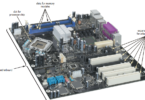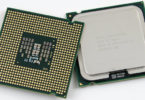Frontside Bus vs Backside Bus
Summary: Each channel, called a bus, allows the various devices both inside and attached to the system unit to communicate with each other. Difference Between Frontside Bus and Backside Bus is that system bus, also called the front side bus (FSB), memory bus, Processor bus which is a part of the motherboard and connects the processor to main memory and with Level2 Cache. While backside bus (BSB) connects the processor to cache. Backside bus is a computer bus that connects central processing unit (CPU) to the Level2 cache.

Frontside Bus
A system bus, also called the front side bus (FSB), memory bus, Processor bus which is a part of the motherboard and connects the processor to main memory and with Level2 Cache. The range of speed in Frontside Bus can be 66MHz, 133MHz, 100MHz, 266MHz, 400MHz, and even more than this range. Frontside Bus is now an important part to have a look when purchasing a CPU or motherboard. When computer professionals use the term bus by itself, they usually are referring to the system bus.
Backside Bus
A backside bus (BSB) connects the processor to cache. Backside bus is a computer bus that connects central processing unit (CPU) to the Level2 cache. It was first introduced by the Intel Corp. in the Intel Pentium Pro. Backside Bus (BS) is a part of Central processing unit (CPU) now but the speed of this Bus totally depends on the speed of the Processor.
Also Read:
Difference Between System Bus and Expansion Bus
Difference Between Instant Messaging and Text Messaging
Difference Between Instant Messaging and Sms
Difference Between Mailing List and Newsgroup







Leave a Comment
You must be logged in to post a comment.